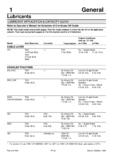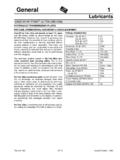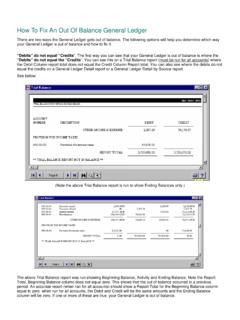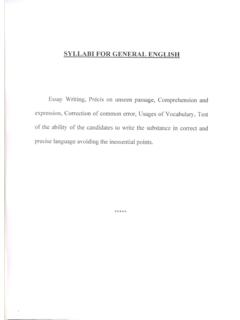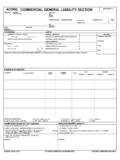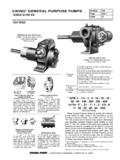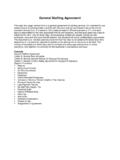Transcription of General 1
1 General 1. Lubricants Table of Contents Bartender II Lubricating System .. 1E-29 to 1E-30 Lubricating Equipment: Engine Oils: Grease Guns And Accessories .. 1E-32 to 1E-38. Case IH No. 1 .. 1E-7 to 1E-8 Funnel Cap .. 1E-39. Case IH Low Ash .. 1E-9 to 1E-10 Free-Flo Spout .. 1E-39. Auto Supreme .. 1E-11 Grease Fittings .. 1E-40 to 1E-43. Hydraulic/Transmission Fluids: Systemgard Lubricant Analysis Service .. 1E-44. Case IH Hy-Tran Ultra .. 1E-12 to 1E-13 Part Number Index .. 1E-184 to 1E-185. Low Temperature Hy-Tran Ultra .. 1E-14 Sun 2 Waste Oil Heater.
2 1E-45 to 1E-47. Case Hydraulic Excavator Fluid .. 1E-15 Oil Story .. 1E-2 to 1E-6. Case AW Hydraulic Fluid .. 1E-16 Specialty Fluids/Lubricants: Case TCH Fluid .. 1E-17 Case IH 135H EP Gear Lube .. 1E-20. Case Trans-XHD Fluid .. 1E-16 Case IH Limited Slip Additive .. 1E-21. Case Transaxle Fluid .. 1E-18 Case Brake Rebuild Additive .. 1E-21. Case HTO/HTO Premix Fluid .. 1E-19 Case Crawler Brake Oil .. 1E-22. Lube Minder Automatic Case IH Slip Plate No. 1 and 3. Chain Lubrication System .. 1E-31 Graphite Lubricant .. 1E-23. Lubricant Application & Capacity Guide: Case IH Seed Flow Lubricant.
3 1E-22. Case and Case IH Tractors .. 1E-50 to 1E-97 AG Lubricant .. 1E-23. IH Tractors .. 1E-98 to 1E-127 Molykote G-n Lubricant .. 1E-24. Steiger Tractors .. 1E-128 to 1E-149 EP-O Grease .. 1E-24. Equipment/IH and Case IH .. 1E-150 to 1E-179 Ultra Blue Hi-Temp Grease .. 1E-24. Irrigation Power Units .. 1E-148 to 1E-149 Case IH 251H-EP Grease .. 1E-25. Uni-Loader Skid Steers .. 1E-180 to 1E-182 Moly Multi-Purpose Grease .. 1E-26. Crankcase Lubricants .. 1E-183 Case IH Cotton Picker Bar Lube .. 1E-26. Spindle Grease .. 1E-27. Case IH Spindle Cleaner.
4 1E-28. Viscosity Equivalents .. 1E-48. Viscosity - Temperature Usage Recommendation .. 1E-49. 1999 Case Corporation Rac 8-61485 1E-1 Issued October, 1999. 1 General Lubricants THE OIL STORY. WHAT IS OIL? WHAT OILS DO. Engine oils and transmission/hydraulic fluids are carefully Lubricating oils are expected to perform an assortment selected combinations of base stocks and additives which of tasks to keep your equipment running smoothly. are blended to give desired performance in a wide variety of applications. Lubrication is the first and foremost task.
5 To do this, oils form a thin fluid film on moving parts, preventing the Base Stocks are refined from crude oil to obtain prod- metal to metal contact which would cause excessive ucts with the best lubricating properties. Base stocks wear or failure of an engine or transmission. generally make up 80-95% of a typical engine oil. Cooling is provided by the circulating oil which carries Additives are chemicals added to the base stocks to heat away from moving parts to minimize oxidation and improve performance. While representing only 20% or deposit formation.
6 Less of the material in engine oils and hydraulic fluids, the proper additives are critical to obtain optimum lubricating Dispersion of Contaminants is achieved by special performance in today's equipment. There are a number additives which surround some contaminants keeping of additives used in oil. The most common are viscosity them in solution within the oil. These special additives index improvers, detergents, dispersants, anti-wear and insure that particles are transported to the filter where friction modifiers, oxidation and corrosion inhibitors, acid they can be removed from the oil.
7 Particle disbursement neutralizers, pour point depressants, and anti-foam prevents the formation of deposits on metal surfaces in agents. By properly blending combinations of these addi- the engine and also prevents corresponding engine tives, oil manufacturers can tailor products to meet the wear. specific needs of their customers. Oxidation Resistance is important in extending the Multigrade Engine Oils exhibit behavior at low temper- service life of an oil. Oil reacts with oxygen at high tem- atures for easier starting and thick oil characteristics at peratures in engines to form gums and varnish which operating temperatures for better wear resistance and cause deposits and thickening of the oil.
8 When added to sealing. The addition of special polymers to the base oil, oxidation inhibitors reduce sludge formation and sig- oils allows for this versatility. These polymers expand as nificantly increase the oil's useful life. temperature increases, resulting in a thicker oil. One big drawback in the use of multigrade oils is that the poly- Corrosion Protection is necessary to combat chemical mers shear, or break down under load. As a result, with attack on engines. Detergents and acid neutralizers are time of service in heavy-duty applications, performance added to oil to clean engines of harmful deposits and to is reduced.
9 Polymer shearing also can contribute to car- counteract the strong acids which are formed in an bon deposit formation in diesel engines. Hydrostatic engine during combustion. transmissions are even more sensitive to polymer shear The way an oil is used has important effects on the type than engines. of oil required. Available Horsepower Used in an engine ranges from 30% in a car or pick-up truck to 60% in an over-the-road truck, and up to 90% in a farm tractor or piece of con- struction equipment. Oils for your tractor, therefore, need to be formulated differently than oil for your car due to the vastly different severity of service.
10 Rac 8-61485 1E-2 Issued October, 1999. General 1. Lubricants THE OIL STORY. WHAT SHOULD I LOOK FOR IN AN OIL? Sulfated Ash content is an indication of the amount of Not all oils are the same. The only way to distinguish additives in the oil for detergency, dispersion and acid them is by comparing data sheets and analyzing the neutralization. In a gasoline engine a lower ash content areas listed in the Typical Properties Table (shown on is preferable because it minimizes spark plug and valve bottom of page). deposits, and acid is less of a problem than in diesel engines.
